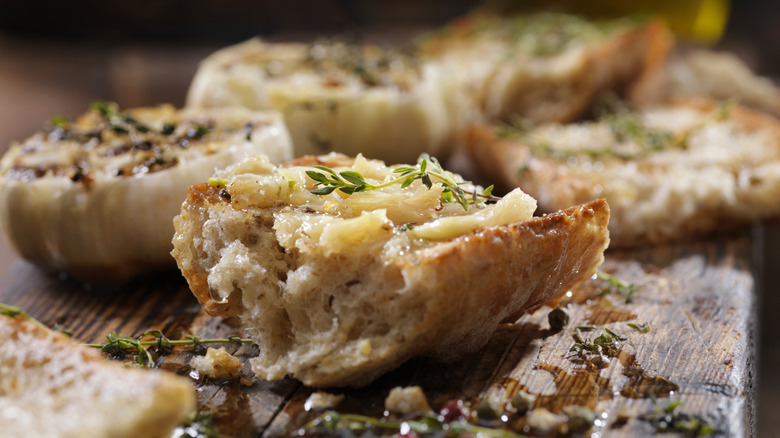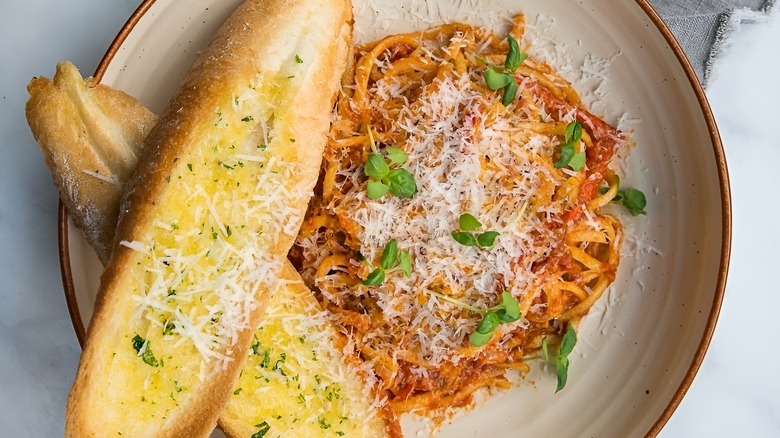The Italian American Origins Of Garlic Bread
If your only touchpoint for Italian cuisine was, say, Olive Garden, what would you expect to find in a typical trattoria or osteria in Italy? It's quite possible you'd think minestrone, eggplant parmigiana, lasagna classico, chicken tortellini Alfredo, and endless garlic breadsticks were traditional fare. But, alas, many of these items were perfected in Italian American kitchens, most decidedly garlic bread, an item that you're not likely to find on any menus from Milan to Palermo. Stateside, though, it's a staple of beloved "red sauce" Italian restaurants and pizza parlors. So what gave rise to garlic bread and who should get the thank you note?
Italians, like many other groups from around the world, flocked to the U.S. in the late 19th and early 20th centuries looking for opportunities. They, of course, brought with them their culinary traditions, but faced twin hurdles in executing on them. One was access to ingredients they were familiar with. Specific types of vegetables, like chilis and tomatoes, certain cuts of meats, varieties of cheese, and even spices were not to be found in American markets at that time. They made do with what was available and changed recipes as needed to get as close an approximation as possible. The other difficulty was, when operating restaurants that served Italian cuisine, ensuring that the food was also appealing to folks whose tastes differed. Enterprising restaurateurs did what so many others have done and bridged the gaps. This is where we find the font of garlic bread.
Meeting a need
No one can say for sure who first married crusty bread with copious amounts of garlic, butter, and herbs. Bread is a staple in Italy which has been enjoyed for thousands of years. So central was bread that, as with many other cultures, ways to use it far past its freshest state were devised to maximize foodstuffs. One of these appears to have been frying stale bread in oil and rubbing it with pungent garlic, a practice that can be traced to Venice in the 1400s. This likely gave rise to what is known today in Italy as bruschetta, from the Italian bruscare which translates to "to toast" or "to toast over coals."
As discussed, in the U.S. around the turn of the 20th century, certain items were hard to find. Those included the breads that would have been prevalent back in Italy as well as olive oil. More readily available were French bread, or baguette, and butter. Knowing that both Italians and Americans enjoy bread with their meals — especially when there is sauce to be sopped — chefs wanted to provide diners with a flavorful approximation of bruschetta. Bread was topped with plenty of butter, toasted until crispy, rubbed with raw garlic cloves, and, maybe, sprinkled with herbs or parmesan. Before long, garlic bread caught on and, as is so often the case, spread to other restaurants, Italian and not.

